A message from EatThePlanet.org: "We are happy you found us! We strive to be informative and accurate. Enjoy what you find here! Take a look at our new downloadable pdf eBook A Complete Guide To Foraging. We put a lot of work into this eBook and are very excited to share it with you." - Joe Forager(Owner)
Editor’s note: This article was originally published in May 2019. Updated April 2022.
White clover (Trifolium repens) is a low-growing perennial plant that’s native to Europe and Central Asia. It’s one you’re likely very familiar with, as it has been naturalized all over the world as a common lawn plant. Its most distinguishable features are the shamrock-shaped, smooth, trifoliolate leaves and clusters of white flowers. Often overlooked and lost amongst lawns, white clover actually possesses some great culinary and medicinal uses.
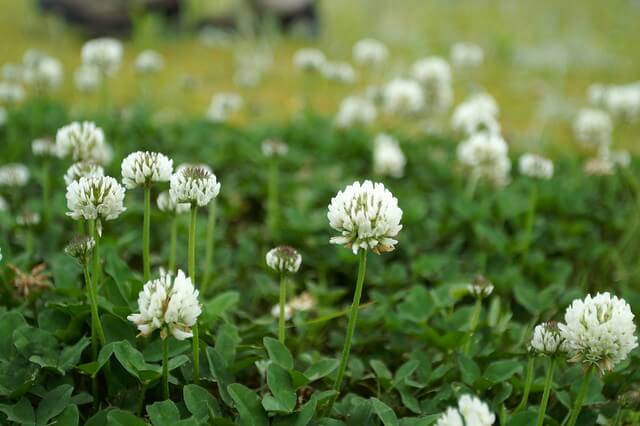
Edibility and culinary use
All aerial parts of this plant are edible, including the stems, leaves, flowers, and seed pods. The leaves and flowers have a delicate, sweet taste and can be used fresh right after harvesting or dried for later use. The most common way to consume the leaves and flowers is to brew them to make a white clover herbal infusion.
White clover recipes
Fresh leaves also taste great in a salad, soup, or vegetable stir-fry. While dried leaves can add a mild, vanilla-like flavor to baked goods. Dried clover flowers are also great for adding flavor to baked goods as well as jelly and cool beverages. Fresh white clover flowers can also be used as an edible garnish in various dishes.
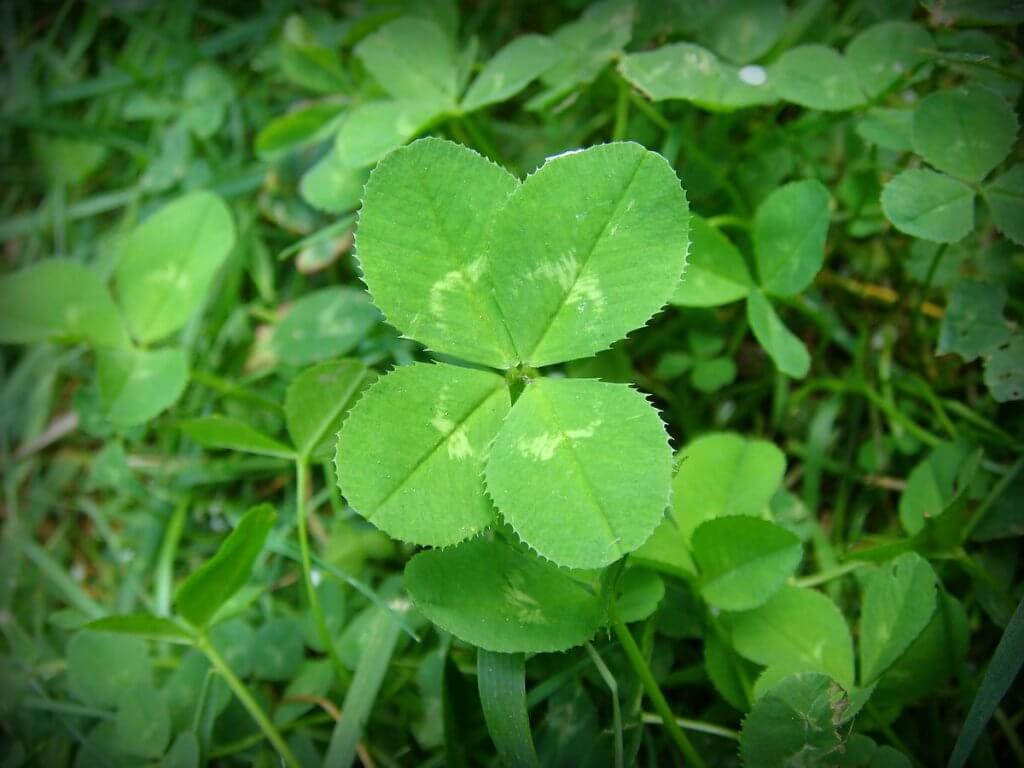
Additionally, you can use white clover as a substitute for red clover. While both plants don’t exactly have the same flavor, they’re similar enough to be used interchangeably. For example, dried white clover flowers and seed pods can be ground to make gluten-free flour, just like with red clover flowers.
Health benefits of white clover
Compared to its cousin, the red clover, white clover is less popular in the herbal medicine realm. It also has fewer health benefits. But, that doesn’t mean white clover is useless as a herbal remedy. It contains a lot of essential vitamins and minerals. Including vitamins A, B2, B3, C, and E as well as magnesium, potassium, chromium, and calcium. Due to its nutritional content, white clover is often used as a natural remedy in communities around the world. Turkish, Indian, and also Native American herbalists have used white clover in various remedies.
A white clover infusion can boost the immune system and treat fever, coughs, and colds. It’s also good for treating common cold symptoms, such as congestion and headaches. White clover herbal tea could treat rheumatic aches and joint pain too. Other uses include use as an antiseptic eyewash to treat minor eye infections. Or, the leaves can be applied as a poultice to heal external wounds, burns, ulcers, and sores.
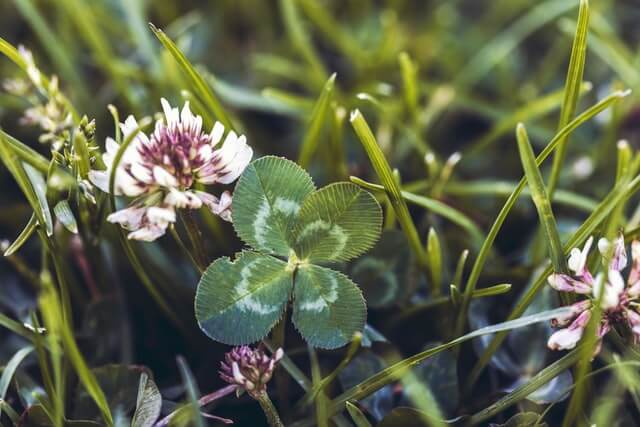
Cultivation of white clover
White clover is becoming more and more popular among gardeners. It looks great as a grass alternative. It’s an excellent creeping ground cover; it’s easy to maintain, moderately drought-resistant and requires no fertilizer. As a nitrogen fixator, white clover can actually improve your garden’s soil fertility. It also attracts bees and other pollinators which is beneficial if you have a vegetable garden. And of course, you get the added bonus of having a convenient source of a tasty, medicinal potherb.
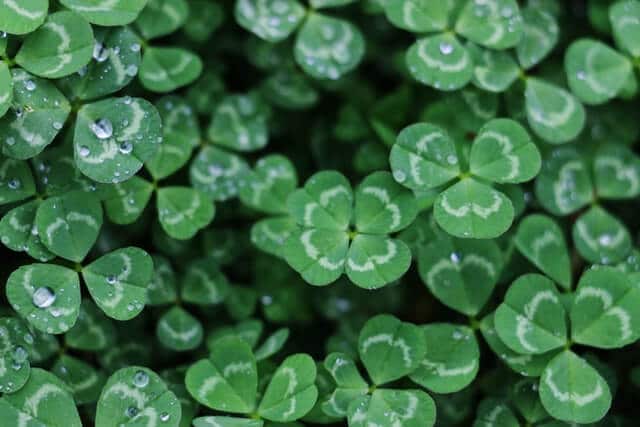
Growing white clover from seed
You should be able to get white clover seeds online. Choose a location with moist, rich soil in the sun or partial shade. Aerate the soil, water the area daily to moisten the soil, and remove any weeds that might hinder the clover’s growth. It’s recommended to start sowing the seeds in spring or summer.
Sow the seeds evenly over the area and bury them under a ¼” layer of soil. The seeds should start germinating in 10 to 15 days. Water the area daily to ensure optimum growth until the plants are well established. Do not fertilize white clover as doing so will kill them.
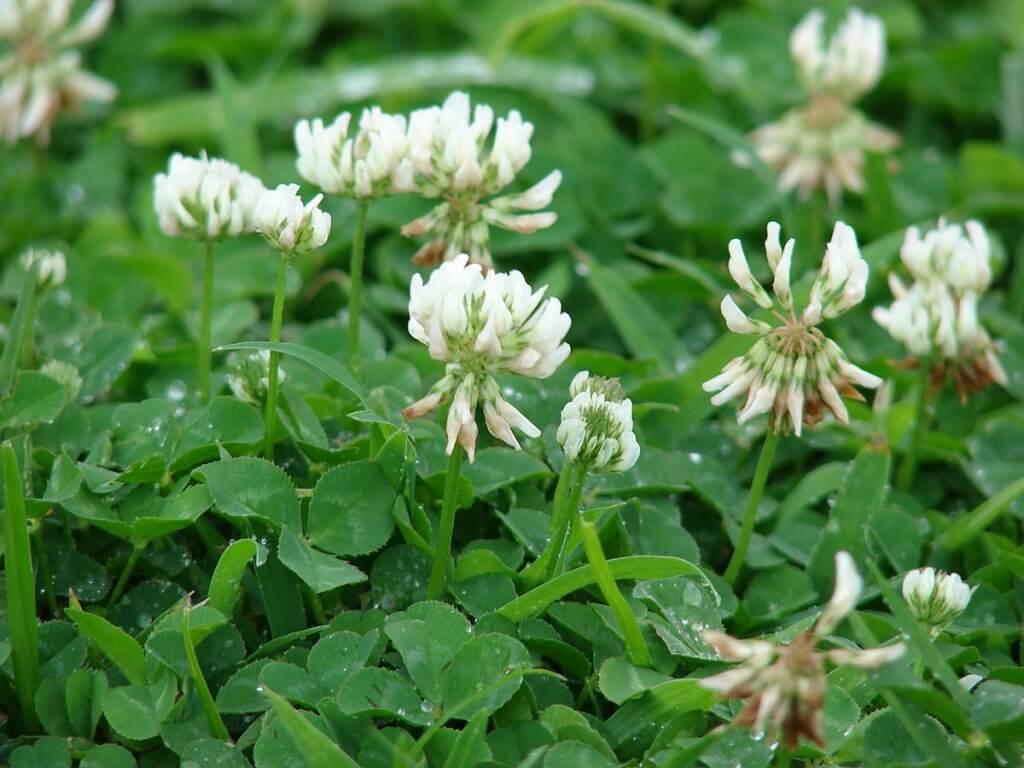
Cautions and lookalikes
White clover is generally safe to consume in moderation. However, it can have a blood-thinning effect and might increase the risk of bleeding. So, it’s best to stop consuming this herb at least 2 weeks before a scheduled surgery. This blood-thinning property might also interact with hypertension and blood-thinning medications. If you take medication it’s best to consult your doctor before including white clover in your diet.
White clover grows in many urban settings. And because of this, it’s important to follow safe foraging guidelines. If you eat white clover from a park or lawn that has been treated with pesticides or herbicides you could become very ill.
Conclusion
Despite its humble appearance, there’s no denying that white clover is a very useful plant to have around. It’s not only good for your garden, but it’s also great for your health. Moreover, its lush green foliage will stay gorgeous all throughout the summer and often into winter as well. For more tasty wild edibles to find in your backyard check out our guide to eating weeds. It has lots of foraging and identification tips, and even recipe ideas.
Featured Image: White clover flower photo by AnRo0002 on Wikimedia Commons
---------------
Writen by Cornelia Tjandra
Cornelia is a freelance writer with a passion for bringing words to life and sharing useful information with the world. Her educational background in natural science and social issues has given her a broad base to approach various topics with ease. Learn more about her writing services on Upwork.com or contact her directly by email at cornelia.tjandra@gmail.com
Many of our readers find that subscribing to Eat The Planet is the best way to make sure they don't miss any of our valuable information about wild edibles.
See our privacy policy for more information about ads on this site







6 Responses
Love your article! So much great info. I teach wild edibles on group hikes/field classes, and this info was very helpful, esp the part about thinning the blood (I have a cautious approach.) I would suggest to not have a pic of a 4 leaf clover (I think there’s 2 in this article) unless it had a caption saying 3 leaves are by far the norm, here’s that proverbial ‘4 leaf clover’. I find so many people who confuse Oxalis / sour grass / Wood Sorrel as clover, and its really fun to teach them both edibles. Again, thank you!
Whawhooo!!! Thank you! This is great information and I will share it!!
Awesome website, please add me to mailing list
I’m thankful to have read this because I am on a blood thinner. I do at least want to enjoy one cup of tea made with white clover.. I will plant seeds to see the beauty grow.
BTW, would it be possible to grow them in a large planter?
I weight train, and have thrown a couple handfuls of clover into my protien shakes, to help get my daily required greens.
Thos was very interesting. It shows that we have lost touch with all the goodness surrounding us! We all need to live with more awareness. Thank you for sharing.